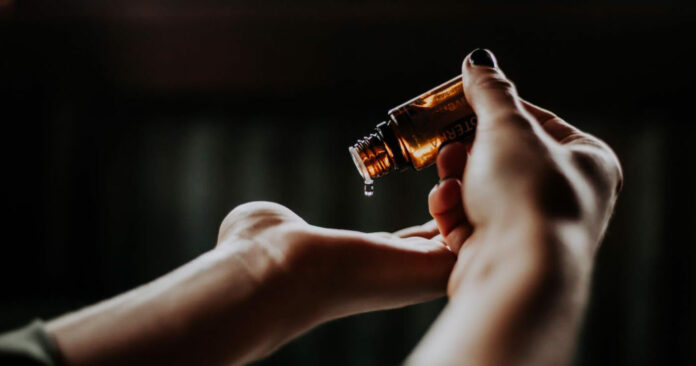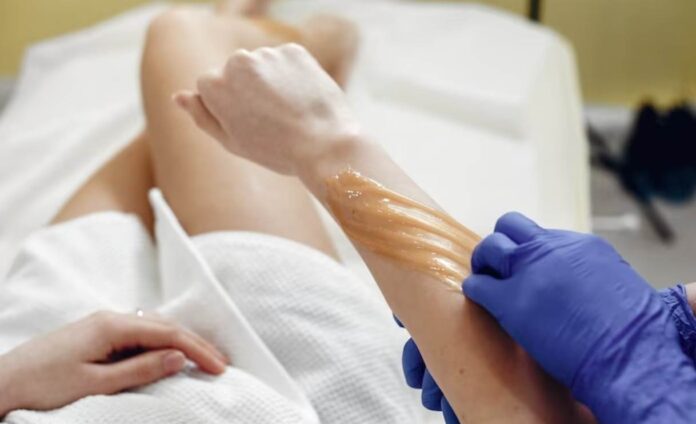Have you ever struggled with a moisturizer that feels heavy and makes your skin shinier and greasier than normal? or on the contrary, have you ever worn a product that makes your skin feel tighter and itchy afterward? This is because those products don’t match your skin type!
Understanding your skin type is key to making conscious decisions when it comes to choosing cosmetic products and building skincare routines that work for your specific needs, saving you time and money on products that may not be the right fit.
But, how do you know your skin type? In this article, we will explain the five different skin types there are, what they are based on, and how you can find yours just by following 3 simple tests at home.
The Skin’s Lubrication Process.
 To better understand how the skin classifies into different types, we need to see how it handles keeping its natural moisture in the first place.
To better understand how the skin classifies into different types, we need to see how it handles keeping its natural moisture in the first place.
As you may already know, the skin serves as a barrier that separates the internal environment from the external environment, regulating what enters our body and what leaves it (for example, water), also protecting us from damage by external aggressors [1]. One of the many ways it can perform this task is by secreting sebum (aka oil) on the surface of the skin, which not only has antimicrobial actions but is also essential for keeping the skin lubricated and soft, helping to seal in moisture and preventing the skin from drying out [2].
Sebum is produced by the sebaceous glands, which are in higher density in our face and scalp [2]. Technically, sebum consists of a unique mixture of lipids, mainly triglycerides and fatty acids, wax esters, squalene, and small amounts of cholesterol [3]. The greater the activity of these sebaceous glands, the greater the production of these lipids and the lubrication of our skin.
So, what is a “Skin Type”?
When we talk about “skin type”, we are simply referring to the amount of oil the skin can produce, which is usually associated with the level of moisture it can retain.
Depending on the skin’s ability to produce a greater or lesser amount of oil, the skin can be classified into 4 main types: oily, dry, combination, and normal. However, there is a 5th skin type (sensitive) that can accompany any of the other 4 types in some people.
Let’s explore all of them.
1. Oily Skin
 People with oily skin tend to produce greater amounts of sebum, which makes their faces look shiny and greasy [4]. Pores are normally enlarged due to the higher size and activity of the sebaceous glands, and the skin can appear thicker to the touch. It may be associated with comedones (like
blackheads
and whiteheads), acne scars, and skin irritations [5].
People with oily skin tend to produce greater amounts of sebum, which makes their faces look shiny and greasy [4]. Pores are normally enlarged due to the higher size and activity of the sebaceous glands, and the skin can appear thicker to the touch. It may be associated with comedones (like
blackheads
and whiteheads), acne scars, and skin irritations [5].
2. Dry skin
 People with dry skin don’t produce enough sebum to seal in moisture, which leads to a lack of natural hydration. Therefore, the skin visibly looks dehydrated, ashy, or flaky, feels tight, and itchy, and can even crack in some cases. Pores aren’t as visible due to the lack of sebaceous glands activity. To the touch, the skin seems cold, thin, and rough, with minimum elasticity, and often with dehydration streaks [5].
People with dry skin don’t produce enough sebum to seal in moisture, which leads to a lack of natural hydration. Therefore, the skin visibly looks dehydrated, ashy, or flaky, feels tight, and itchy, and can even crack in some cases. Pores aren’t as visible due to the lack of sebaceous glands activity. To the touch, the skin seems cold, thin, and rough, with minimum elasticity, and often with dehydration streaks [5].
3. Combination skin:
 Combination skin is usually characterized by an oily T-zone (forehead, nose, and chin) that looks shiny and greasy, combined with dry or normal skin on both sides of the face [5]. However, if you notice that your skin tends to produce more oil in some parts while it’s drier in others, that’s a sign of combination skin too.
Combination skin is usually characterized by an oily T-zone (forehead, nose, and chin) that looks shiny and greasy, combined with dry or normal skin on both sides of the face [5]. However, if you notice that your skin tends to produce more oil in some parts while it’s drier in others, that’s a sign of combination skin too.
4. Normal skin:
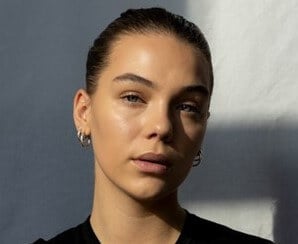 Normal skin visually looks uniform and luminous (without excessive shine), showing a smooth and even texture without apparent pores [5]. People with normal skin feel that their face is neither too oily nor too dry and can tolerate a wide variety of skincare products. To the touch, the skin feels fresh and smooth, with a normal thickness, and a good level of hydration, elasticity, and firmness [5].
Normal skin visually looks uniform and luminous (without excessive shine), showing a smooth and even texture without apparent pores [5]. People with normal skin feel that their face is neither too oily nor too dry and can tolerate a wide variety of skincare products. To the touch, the skin feels fresh and smooth, with a normal thickness, and a good level of hydration, elasticity, and firmness [5].
5. Sensitive skin :
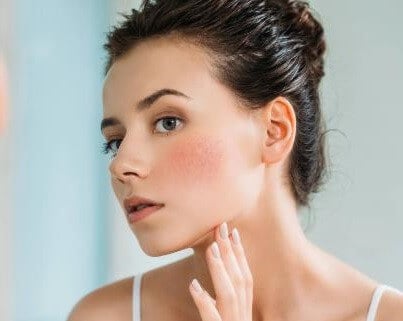 Sensitive skin is highly reactive to many factors, including skincare products and makeup [6]. It can get inflamed easily and it’s visibly characterized by redness and a burning, stinging or painful sensation. It’s usually related to dry skin (tightness, flaking), but other skin types can also be sensitive.
Sensitive skin is highly reactive to many factors, including skincare products and makeup [6]. It can get inflamed easily and it’s visibly characterized by redness and a burning, stinging or painful sensation. It’s usually related to dry skin (tightness, flaking), but other skin types can also be sensitive.
Skin conditions such as acne, rosacea, or different dermatoses have also been linked to increased skin reactivity and are associated with sensitive skin [6].
How Can You Find Out Your Skin Type?
Understanding our skin type can sometimes be tricky. For some people, it’s easy to know whether they are very oily or dry, but for others, the answer is not so straightforward.
If you’re struggling to better understand your skin, here you will find 3 simple tests you can follow at home to determine your skin type.
TEST #1: WASH, WAIT AND OBSERVE.

This first test is based on pure observation of your skin after washing it. For this, you just need to follow these steps:
1. Wash your face thoroughly with a very gentle cleanser (to avoid over-stripping all your natural oils).
2. Get a washcloth and pat the skin dry. Notice how your skin feels immediately after (see notes in the table below)
3. Do nothing to your skin for 2 hours. Don’t apply any products during this time frame.
4. After 2 hours, go to the mirror and examine your skin. The next table summarizes the key observations for each skin type:
|
Skin Type |
Immediately after washing |
After 2 hours |
|
Oily |
Your skin feels refreshed. Some oil may be still present. | All your face looks shiny and greasy. |
|
Dry |
Your skin feels immediately tight, and itchy. | Skin feels tight and rough, and may appear dull, ashy, and/or flaky, with little elasticity. |
|
Combination |
The T-zone might feel refreshed, and some oil may remain. The sides of the face may feel tighter. | The T-zone looks shiny and oily. The sides of the face can look rough and bumpy, or just normal. |
|
Normal |
You won’t notice important changes. | Your skin looks and feels fine, with no major changes. |
|
Sensitive |
You can develop redness after washing. | Your skin looks red or inflamed and may feel some discomfort. |
TEST #2: BLOTTING PAPERS.
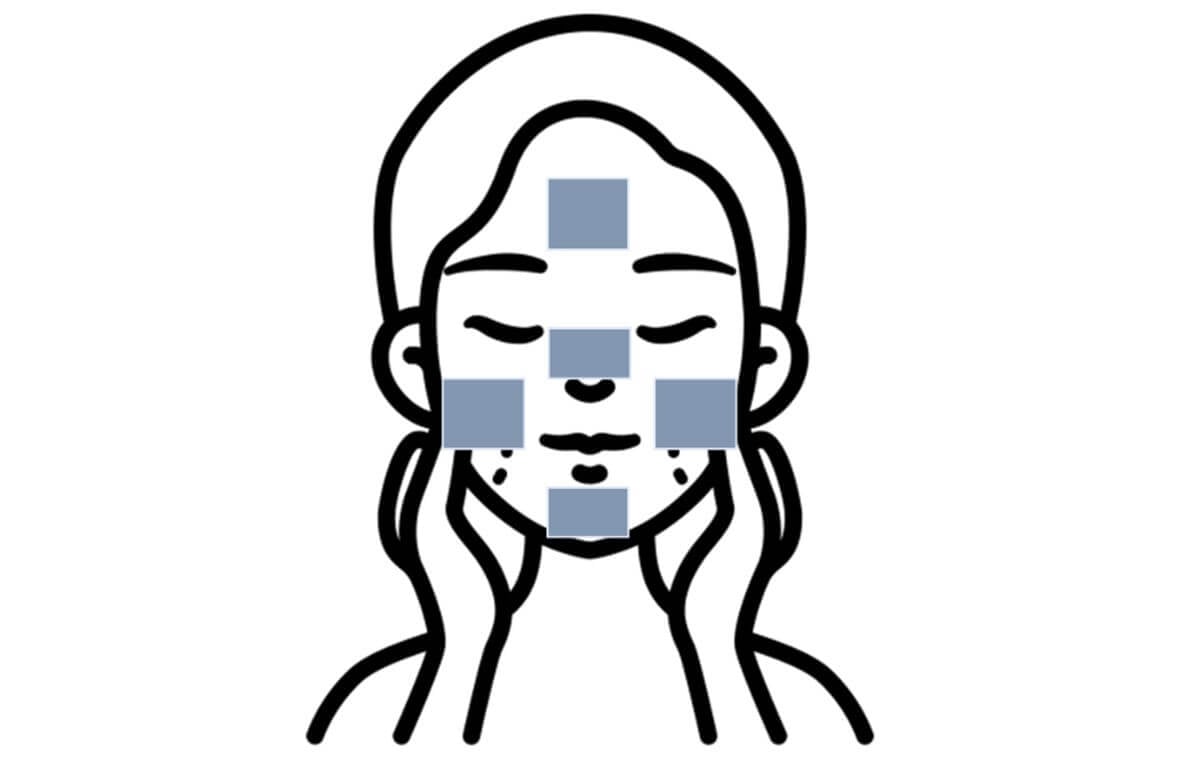
If observing is not enough, you can use blotting papers designed to specifically absorb oil on contact with the skin, so that it’s possible to observe the amount of oil produced.
To do this, right after observing your skin in Test #1, place blotting papers on the forehead, nose, chin, and cheeks, applying a little pressure to facilitate adhesion.
Note where the blotting papers adhere (meaning there is some oil on that part) and where they fall (meaning there is little or no oil on the surface of the skin). The following table shows the results for each skin type:
|
Skin Type |
Blotting Papers |
|
Oily |
Each paper sticks to the skin and becomes oil-soaked, with large visible stains. |
|
Dry |
All papers fall off almost immediately when placed on the face and hardly any oil stains appear. |
|
Combination |
The T-zone papers (forehead, nose, and chin) stick and absorb oil stains on them, while the cheek papers have small oil stains or simply fall off. |
|
Normal |
All papers have small oil stains and may also fall off. |
|
Sensitive |
Look for any redness developed before and after applying the papers. |
TEST #3: PORE SIZE AND SKIN ELASTICITY.

This test gives some extra information to complement your results.
Grab the mirror and observe the size of your pores and how supple your skin is when you stretch it a little.
1st step: Observe where your pores are located and how big or small they are.
2nd step: Pinch your face (forehead, cheeks, chin) and see what the stretched skin looks like.
|
Skin Type |
Pore Size |
Skin Elasticity |
|
Dry |
Not so evident or very small. |
Skin lacks elasticity, takes time to bounce back to recover, or has marks, flakes, or scales. |
|
Oily |
Evident and enlarged pores. |
Skin is plump and elastic, bouncing back when pressure is removed. |
|
Normal |
Imperceptible pores. |
|
|
Combination |
Visible pores in the T-zone, especially around the nose. |
Skin remains plump and elastic, or some parts may lack elasticity as dry skin. |
Skincare in a Nutshell
Finding your skin type makes things easier when selecting products to build your skincare routine , remove makeup , and choose the right moisturizer, cleanser, or sunscreen .
Be aware of always reading the labels to check the skin type for which the product is intended. Generally, you can follow these tips:
• Oily skin: oil-free, lightweight, gel-based formulations.
• Dry skin: nourishing creamy formulations rich in moisturizers (like ceramides).
• Sensitive skin : fragrance-free and alcohol-free formulations, labeled for “sensitive skin”. Some “ cica ” products may work for this type.
• Combination skin : may need different products due to skin duality (oily/dry regions) or look for “skin-balancing” products.
• Normal skin : can tolerate a broad range of products (gel-based, cream-based, etc.).
REFERENCES
[1] Agarwal, S. (2023, May 1). Histology, Skin. StatPearls – NCBI Bookshelf. https://www.ncbi.nlm.nih.gov/books/NBK537325/
[2] Hoover, E. (2022, October 10). Physiology, Sebaceous Glands. StatPearls – NCBI Bookshelf. https://www.ncbi.nlm.nih.gov/books/NBK499819/
[3] Pappas, A. (2009). Epidermal surface lipids. Dermato-endocrinology, 1 (2), 72–76. https://doi.org/10.4161/derm.1.2.7811
[4] Sakuma, T. H., & Maibach, H. I. (2012). Oily Skin: An Overview. Skin Pharmacology and Physiology, 25 (5), 227–235. https://doi.org/10.1159/000338978
[5] De Cássia Meneses Oliveira, R., Ferreira, J., Azevedo, L. F., & Almeida, I. (2023). An Overview of Methods to Characterize Skin Type: Focus on Visual Rating Scales and Self-Report Instruments. Cosmetics, 10 (1), 14. https://doi.org/10.3390/cosmetics10010014
[6] Inamadar, A. C., & Palit, A. (2013). Sensitive skin: An overview. Indian Journal of Dermatology, Venereology, and Leprology, 79 (1), 9. https://doi.org/10.4103/0378-6323.104664

 By Gabriela Bermudez, MSc
By Gabriela Bermudez, MSc
 June 22, 2023
June 22, 2023
 7 minutes
7 minutes












